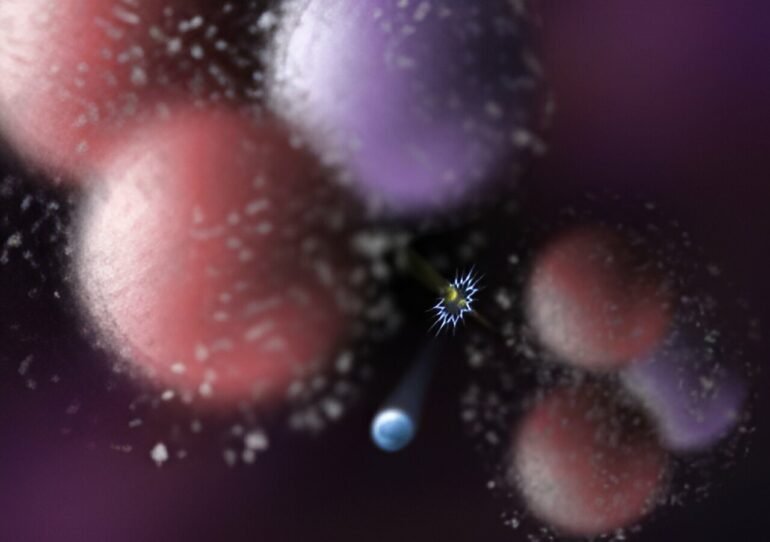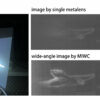The Higgs boson was discovered in the detectors of the Large Hadron Collider a dozen or so years ago. It has proved to be a particle so difficult to produce and observe that, despite the passage of time, its properties are still not known with satisfactory accuracy. Now we know a little more about its origin, thanks to the just-published achievement of an international group of theoretical physicists with the participation of the Institute of Nuclear Physics of the Polish Academy of Sciences.
The research is published in the journal Physical Review Letters.
The scientific world is unanimous in its opinion that the greatest discovery made with the Large Hadron Collider (LHC) is the famous Higgs boson. For twelve years, physicists have been trying to learn as precisely as possible about the properties of this very important elementary particle. The task is extremely difficult due to both the experimental challenges and numerous computational hurdles.
Fortunately, significant progress has just been made in theoretical research, thanks to a group of physicists from the Institute of Nuclear Physics of the Polish Academy of Sciences (IFJ PAN) in Cracow, the RWTH Aachen University (RWTH) in Aachen and the Max-Planck-Institut für Physik (MPI) in Garching near Munich.
The Standard Model is a complex theoretical structure constructed in the 1970s to coherently describe the currently known elementary particles of matter (quarks, as well as electrons, muons, tau and the associated trinity of neutrinos) and electromagnetic forces (photons) and nuclear forces (gluons in the case of strong interactions, W and Z bosons in the case of weak interactions).
The icing on the cake in the creation of the Standard Model was the discovery, thanks to the LHC, of the Higgs boson, a particle that plays a key role in the mechanism responsible for giving masses to the other elementary particles. The finding of the Higgs was announced in mid-2012. Since then, scientists have been trying to gain as much information as possible about this fundamentally important particle.
“For a physicist, one of the most important parameters associated with any elementary or nuclear particle is the cross section for a specific collision. This is because it gives us information on how often we can expect the particle to appear in collisions of a certain type. We have focused on the theoretical determination of the Higgs boson cross section in gluon-gluon collisions. They are responsible for the production of about 90% of the Higgs, traces of whose presence have been registered in the detectors of the LHC accelerator,” explains Dr. Rene Poncelet (IFJ PAN).
Prof. Michal Czakon (RWTH), co-author of the article, adds, “The essence of our work was the desire to take into account, when determining the active cross section for the production of Higgs bosons, certain corrections that, due to their apparently small contribution, are usually neglected, because ignoring them significantly simplifies the calculations. It’s the first time we have succeeded in overcoming the mathematical difficulties and determining these corrections.”
The importance of the role of higher-order corrections for understanding the properties of the Higgs bosons can be seen from the fact that the secondary corrections calculated in the paper, apparently small, contribute almost one-fifth to the value of the sought active cross section. This compares with third-order corrections of 3% (but which reduce the computational uncertainties to just 1%).
A novelty of the work was to take into account the effect of bottom-quark masses, leading to a small but noticeable shift of about 1%. It is worth recalling here that the LHC collides protons, i.e. particles consisting of two up quarks and one down quark. The temporary presence of quarks with larger masses inside protons, such as the beauty quark, is a consequence of the quantum nature of the strong interactions that bind quarks in the proton.
“The values of the active cross section for Higgs boson production found by our group and measured in previous beam collisions at the LHC are practically the same, naturally taking into account current computational and measurement inaccuracies. It therefore appears that no harbingers of new physics are visible within the mechanisms responsible for the formation of Higgs bosons that we are investigating—at least for the time being,” Dr. Poncelet summarizes the team’s work.
The widespread belief among scientists in the need for the existence of new physics stems from the fact that a number of fundamentally important questions cannot be answered with the Standard Model. Why do elementary particles have the masses they do? Why do they form families? What is dark matter made of, traces of which are so clearly visible in the cosmos? What is the reason for the predominance of matter over antimatter in the universe? The Standard Model also needs to be extended because it does not at all take into account gravity, which is such a common interaction.
Importantly, the latest achievement of theoretical physicists from the IFJ PAN, RWTH and MPI does not definitively rule out the presence of new physics in the phenomena accompanying the birth of the Higgs boson. Much may change when data from the gradually starting fourth research cycle of the Large Hadron Collider begin to be analyzed.
The increasing number of observations of new particle collisions may make it possible to narrow down the measurement uncertainties in such a way that the measured range of permissible cross sections for Higgs production no longer coincides with that defined by theory. Whether or not this will happen, physicists will find out in a few years.
For now, the Standard Model can feel safer than ever—and this fact is slowly starting to become the most surprising discovery made with the LHC.
More information:
Michał Czakon et al, Top-Bottom Interference Contribution to Fully Inclusive Higgs Production, Physical Review Letters (2024). DOI: 10.1103/PhysRevLett.132.211902
Provided by
Polish Academy of Sciences
Citation:
Theoretical physicists find Higgs boson does not seem to contain any harbingers of new physics (2024, July 11)



